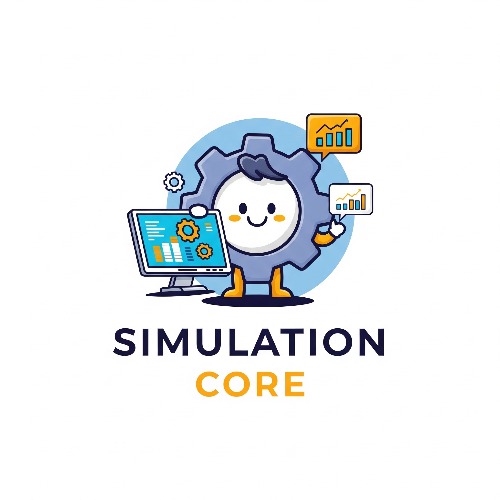🧪 [Plant Simulation Study #23] – Cell Station Simulation

🎬 Overview
In this post, we explore how to use Siemens Plant Simulation to model and analyze manufacturing processes at a more granular 'Cell Station' level, rather than simulating the entire production line. This approach highlights where true efficiency improvements often begin.
🔍 1. Why Simulate at the ‘Cell Station’ Level?
When people hear "factory simulation," they usually imagine entire production lines. However, productivity loss and bottlenecks often originate at the station level.
Key advantages of micro-level simulation include:
- Real-time visibility into equipment utilization, cycle times, and energy consumption
- Operator movement analysis for ergonomic and efficiency studies
- Early detection and resolution of station-level bottlenecks
📊 2. Real-Time Data Collection and Analysis

With Plant Simulation, you can collect live data such as:
| Equipment status | Ratio of Idle / Blocked / Busy time |
| Energy usage | Power consumption rates and efficiency |
| Operator paths | Movement distance and waiting time |
| Cycle times | Average and max processing times per station |
| Bottleneck analysis | Queue time tracking by location |
This allows for data-driven optimization and process improvement.
🖥️ 3. Visualization for Different Stakeholders

The same simulation can be visualized differently depending on the audience:
- 👷♂️ For Engineers
→ Detailed statistics panels, logs, and energy analysis
→ Focused on technical optimization - 👨💼 For Executives/Clients
→ Simplified 2D animations without complex data
→ Easy-to-understand visuals to communicate value and justify investment
This dual approach bridges the gap between technical insight and business understanding.
♻️ 4. Reusable, Modular Simulation Models
Even small-scale station models can be standardized and reused:
- Build equipment-specific templates
- Standardize methods and attributes
- Quickly assemble simulations for similar workflows
This improves modeling efficiency and maintainability over time.
💡 Insight
This video is an excellent example of how simulation can go beyond validation—it becomes a tool for storytelling and persuasion.
The most impressive aspect was the dual use of simulation data:
- For engineers: to diagnose problems and test solutions with detailed metrics.
- For decision-makers: to intuitively grasp complex issues through animations and simple visuals.
✅ Summary
| Focus | Individual Cell Station |
| Key Data | Energy use, cycle time, operator efficiency |
| Use Case | Bottleneck removal, process improvement, visual communication |
| Visualization | For engineers vs for executives |
| Core Message | Simulation is a powerful tool for communication, not just analysis |
